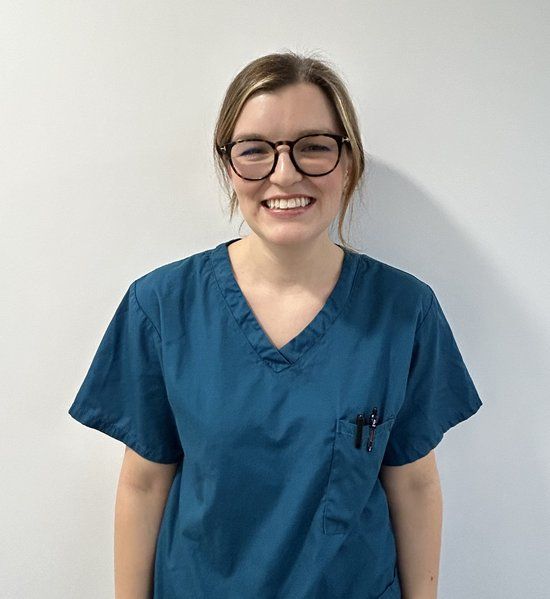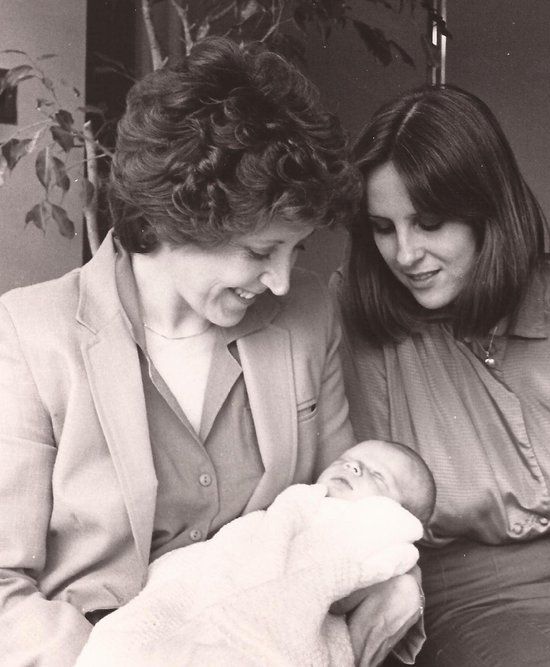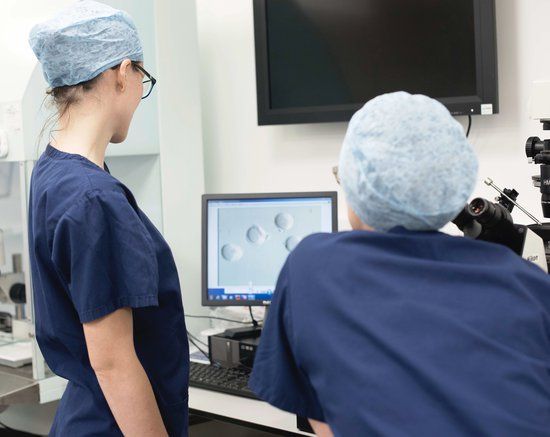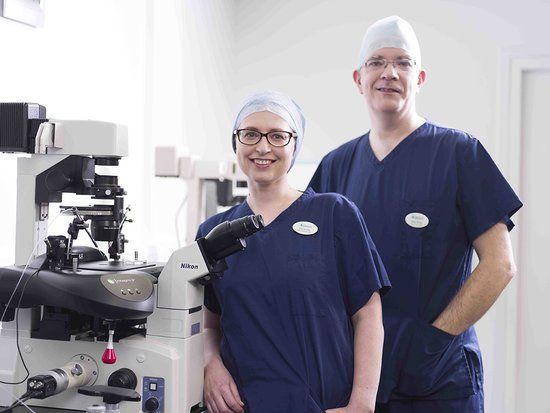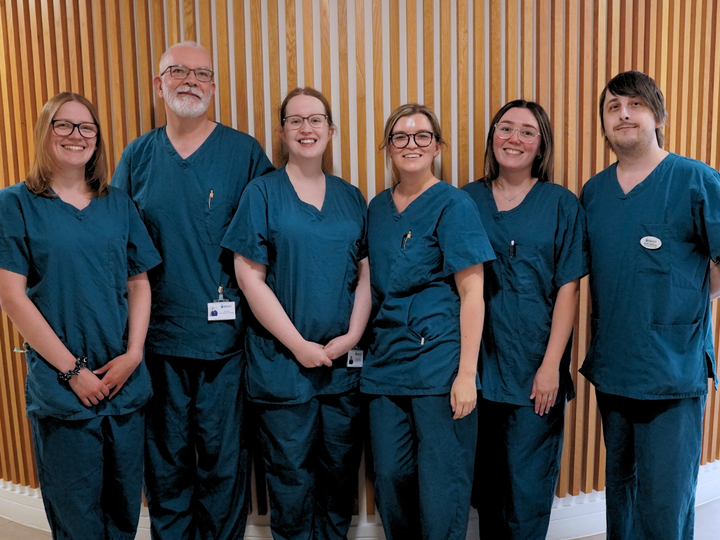
Happy World Embryologists Day
The 25th of July is the birthday of Louise Brown, the first baby to be conceived through IVF back in 1978. Louise was born through the pioneering work of Patrick Steptoe, Robert Edwards and Jean Purdy. Jean Purdy was recognised as an inspirational and pioneering embryologist, which is why this is also annually celebrated as World Embryologists Day. IVF is a ray of hope for people with fertility issues who dream of having a family, so we would like you to join us in celebrating the day and remembering its significance in the history of reproductive medicine.
Our Team of Expert Embryologists at Manchester Fertility
At Manchester Fertility, we have a large team of expert Embryologists and are proud of their dedication and commitment to helping many patients become parents. From our Embryology Practitioner to our Head of Laboratory, our team has a combined total of 136 years of experience, and our longest-standing embryology team member, Alan Birks, has recently celebrated his 33rd year working with Manchester Fertility.
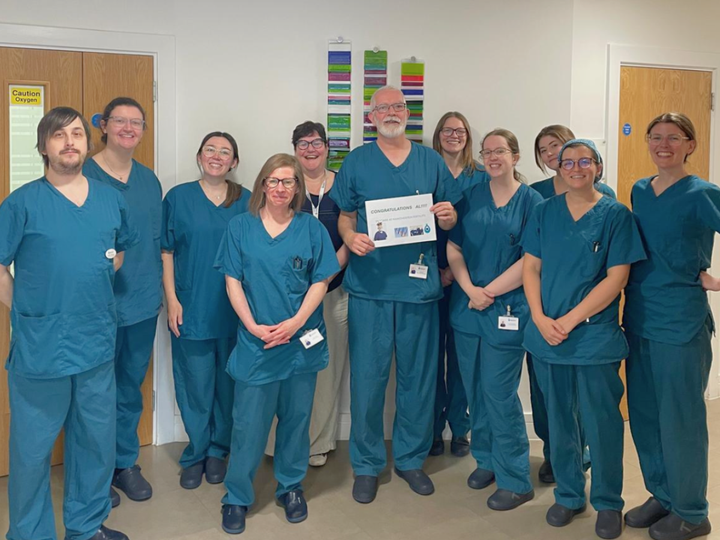
This expertise extends into our leadership team. Debbie Falconer is Manchester Fertility’s Managing Director (joint), and she helped set up Manchester Fertility when it first opened in 1986. She was a key member of the embryology team that welcomed our first Manchester Fertility baby, Philip Hood, born in April 1987.
We often get asked questions about Embryologists and the work that they do. So, we sat down with our team to see what a day in the life of an Embryologist looks like and give you the insight into what goes on in our lab on a busy, magical day.
A day in the life of Manchester Fertility’s expert Embryology team.
We start bright and early, and are usually opening the lab at 7 am (even on the weekends!). It’s really important that we maintain the best conditions for growing embryos. This means that the first thing we do is check the temperatures and gas levels of our equipment, which includes the incubators that hold the embryos as they develop. We also have monitoring systems in place that alert Embryologists if there are any unusual fluctuations in temperature or gases, even at 3 am. We focus on creating the ideal environment for embryos to develop because even the tiniest detail in Embryology can make a difference.
An Embryology lab in the morning is a busy place! There can be several different procedures happening at the same time, but we rotate our duties each day to ensure we always keep up our skills and concentration.
Early morning tasks in the Laboratory
One of the first tasks is to check the eggs from the day before to see if they have fertilised. If we have performed IVF, this means carefully removing cumulus cells from around the eggs and looking for signs of fertilisation on a high power microscope. After ICSI, some of the eggs are already in our time-lapse incubators, the EmbryoScopes, which include built-in microscopes and cameras, allowing us to review an overnight video of each egg while they remain in a stable environment inside the incubator. We update the patients anxiously waiting for news of how the fertilisation process has gone, and how many embryos are growing in the laboratory.
Once this is done, we check the embryos for that day’s embryo transfer, again using the EmbryoScope. For day 5 embryos (blastocysts), we assess the size of the embryo and then assign a grade for each part of the blastocyst based on their appearance. The EmbryoScope also generates a score, and allows us to review each embryo’s whole period of development for any unusual behaviour. It feels very special being able to watch from the first signs of fertilisation through to blastocyst formation, contemplating how something so tiny can have so much potential.
Once we’ve graded the embryos and chosen which are suitable for transfer and cryopreservation (freezing), we contact the patients to provide them with details of embryo quality, answer any important questions, and confirm details for their transfer. As embryos are very dynamic in their growth, we keep patients updated on how their embryos are doing throughout the whole process.
Morning treatments start
While the lab is busy checking the embryos in their care, preparing frozen embryos for transfer, and preparing sperm samples for use in IUI, IVF, and ICSI, The first thing to get started in the procedure room is egg collections, where an Embryologist finds, counts, and washes eggs collected from patients in theatre and carefully places them in culture for use later on in the day. For patients who are having their eggs stored, these are also frozen in the morning.
Around 11:00 am, it’s time for the embryo transfers to start. This is an exciting time; after five days of waiting (and, of course, often months or years before that), the patient can see their embryo for the first time. One of my favourite moments as an Embryologist is being able to show patients their embryo at embryo transfer. We know how much hope and effort has been expended to reach this moment, and we don’t take that lightly. I’ve heard some nice embryo nicknames, and lots of jokes from patients that their embryos look like their dads.
Around 30 minutes before transfer, we use a pipette to carefully move the chosen embryo into ‘EmbryoGlue’. The name of this can be slightly deceiving, as rather than being actual ‘glue’, this is a media that aids implantation into the womb.
In preparation for the transfer, one of the embryology team members and the doctor use our electronic witnessing system to confirm that we have both checked that the correct dish is ready. Witnessing is a significant part of our job because it ensures that we are handling the correct patient’s material for any given procedure. We not only have 2 members of staff manually check the patient labels on each dish and tube, every dish in the laboratory is electronically tagged. This means the system would alarm if a dish assigned to a different patient was placed nearby and stop any potential error at any stage.
When the patient and doctor are ready, we load the embryo into a fine plastic catheter and quickly hand it to the doctor, ensuring it spends as little time as possible exposed to room temperature. After a minute or so, the embryo has been replaced into the patient’s uterus, and we perform a final check that the catheter is clear.
Mid-morning tasks back in the laboratory
Alongside the procedures taking place in our theatre, the embryo care that began in the morning is stretching into the day with continued monitoring of embryos to help us select the best option for transfer and freezing. Some procedures like egg freezing are really time critical so while egg collections are going on in the procedure room in the laboratory, after allowing eggs to settle in culture, those that are going to be frozen or used in an ICSI procedure (where we inject a single sperm into each mature egg) will start to be prepared for this next step. To do this, we carefully remove what we call the ‘cumulus cells’, revealing the oocyte (egg cell) and allowing us to assess the egg for maturity and therefore suitability for ICSI.
At this point in the day, we may also be starting embryo biopsy or ‘PGT’ cases. This is where patients have chosen to have any suitable Day 5 or Day 6 stage embryos (blastocysts) genetically tested. This involves removing 5-10 cells from the part of the embryo that we hope would become the placenta. These cells are then sent off for testing, and the embryos are frozen while we wait for the results. Safely taking biopsies from embryos is an advanced skill, requiring patience, precision, and as you can imagine, a lot of concentration.
Taking breaks to ensure the best outcomes
The lab can feel quite busy in the mornings, luckily we have a great group of colleagues. We’re all really close and have lots of strategies for working effectively as a team, ensuring everything runs on time, which is something we definitely appreciate on busy days. We know we need to be at our best so that we can do the best for our patients. With that in mind, we actively look after each other and refuel as needed. We never lose sight of our privilege and responsibility as Embryologists. For that reason, we strongly encourage taking proper lunch breaks and respite from looking down microscopes.
Afternoon tasks in the laboratory
In the afternoon, our jobs include Intracytoplasmic Sperm Injection (ICSI). This involves injecting a single sperm into each mature egg. Suitable sperm are selected and immobilised on an ‘ICSI rig’ which holds a needle much thinner than a human hair, before being carefully injected into the eggs. It’s amazing that we have the technology to do this, and the fact that we are potentially creating an embryo is something we never forget. We’ll be eagerly checking the outcome the following morning with the hope of passing on good news.
We’ll also be selecting the high-quality embryos that are suitable for cryopreservation (freezing) to rapidly cool through a process known as vitrification. They will be loaded onto a tiny plastic device for storage in liquid nitrogen. These embryos have been selected not only by how they look at the time, but also by the journey they have taken to get there. We can’t help but feel invested in our patients’ embryos - we’ve watched them grow from the very beginning, and we’re often rooting for them and checking on them throughout the day. The embryo freezing process itself is time critical, and as with any procedure in the lab, Embryologists require extensive training before being able to handle embryos used in treatment.
Embryologists are not only completing the tasks of the day, but we’re also thinking 24 hours ahead. We need to prepare all the paperwork, tubes, and dishes (which house the eggs/embryos) for the procedures scheduled for the following day. This is particularly important for dishes containing our culture media, as this needs time to warm and equilibrate before use.
How our embryologists finish their day
Towards the end of the day, we may get the chance to do some computer admin, catch up on emails, review protocols, and engage in continuous professional development. We hold regular case meetings, feature visiting speakers, and participate in journal clubs, ensuring we stay informed about any new developments in the field that can further benefit our patients. It’s common for us to discuss cases together in the office, get second opinions, and brainstorm ideas for improvements.
There’s often news of positive pregnancy tests or baby photos being shared around. There’s a brilliant sense of shared celebration hearing these updates after all our hard work, and you can really see the love everyone has for their job.
We’ll also catch up on our own side projects and any patient call requests and messages through our Amelya app. Although we can’t always come to the phone immediately (as you can see the lab work needs our attention at busy times), we’re always happy to make time to discuss a patient's embryos.
On a weekday, the lab typically winds down at 4 pm. We’re closing up the laboratory, making sure everything is clean, and it’s at this point that we conduct our final laboratory checks. This includes ensuring all frozen material is safely witnessed into storage, that all of our patients have heard from us, and we have performed all of the temperature checks again, making sure that all of the critical equipment in the lab is stable and ready for another busy day.
End of the day
As we make our way home, we all try to unwind in our own ways, whether that’s cooking, getting outside, exercising or spending time with our loved ones. Challenging cases and certain patient conversations will stay with us all, especially if someone only has a small number of embryos or has had a particularly difficult fertility journey. But hearing positive news from patients and knowing we had even a small part in that is the best feeling, and we are always crossing our fingers for the best outcome.
Last updated: 25th July 2025

